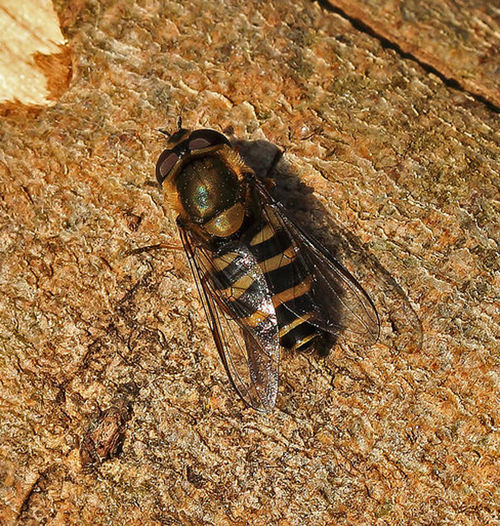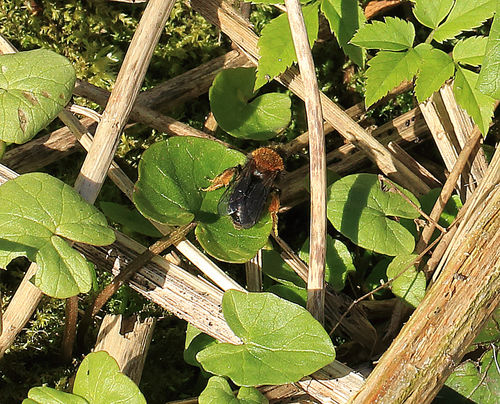Syrphus torvus and Andrena clarkella and along Barnett Brook, Blakedown, Worcestershire, March 2015
Mark Peacock
The end of the third week in March 2015 provided early warm spring-like conditions so I decided to spend a while on a southerly facing aspect of the valley through which the Barnett Brook runs, near Blakedown.
Within the area were four Goat Sallows, and flowering Lesser Celandines were providing abundant ground cover, along with both Opposite- and Alternative-leaved Golden Saxifrage.
There were many Eristalis Hoverflies on the wing and most of those resting on wooden logs appeared to be Eristalis pertinax.
One hoverfly I noticed sunning itself was distinctly different, and of the genus Syrphus. I photographed it (01) and was able to get a good detailed image of its features, especially the eye hairs which are diagnostic of Syrphus torvus. Although very similar to the more commonly recorded Syrphus ribesii and Syrphus vitripennis, torvus is generally on the wing 2-3 weeks before these species. Its yellow abdominal stripes are also relatively thinner than on the other species. Its easy confusion with ribesii and vitripennis means it is an under-recorded species but with modern digital photography and readily available on-line networks for information sharing, it may be possible to increase records for Worcestershire.
On 22nd March settling on Lesser celandine, and also going to a nearby telegraph pole were several Andrena bees. I secured a record picture of one (02) which I was able to use to confirm that it was the suspected Andrena clarkella, an early and quite distinctive solitary bee. It is often the first solitary bee of the year on the wing and it forages almost exclusively on sallow catkins. Although not regarded as scarce it often goes unrecorded. This bee was also noted on a visit with Brett Westwood on 6th April, this time on Sallow. A look for its cleptoparasite Nomada leucophthalma proved unsuccessful but is ongoing
Acknowledgements.
Thanks to Steven Falk and Ian Andrews in confirming identifications.
Images
01. Syrphus torvus, Blakedown, March 2015. Mark Peacock
02. Andrena clarkella, Blakedown, March 2015. Mark Peacock

